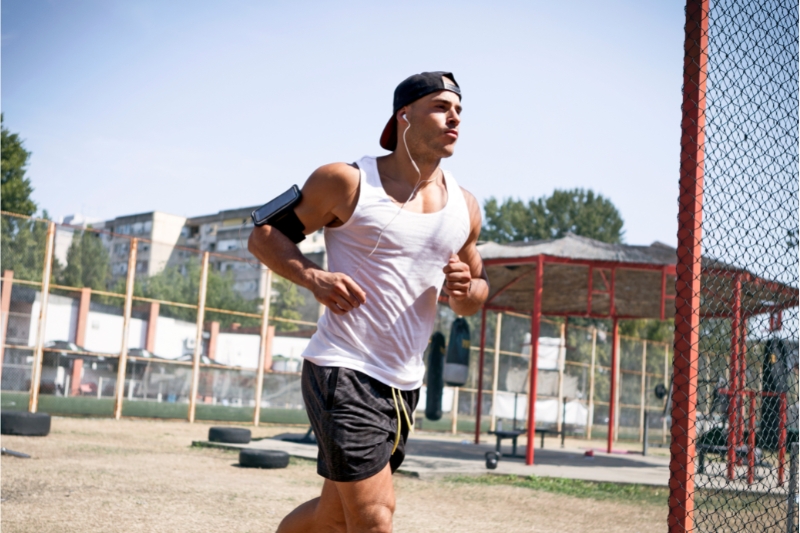Have you ever experienced lower back pain when running? Runner’s lower back pain can be a surprisingly common – and incredibly uncomfortable – condition to experience.
Still, you shouldn’t have to live with lower back pain while running. Luckily, there are plenty of excellent options you could consider to begin recovering.
We’ve outlined some key tips and ideas today to help you learn more about why you might be experiencing lower back pain or muscle spasms.
After all, running pain-free shouldn’t be an impossible dream. Fortunately, there are plenty of ways to reduce the risk of suffering lower back pain going forward.
Everything You Need to Know About Lower Back Pain When Running
It’s not uncommon for runners to experience low back pain when they run. However, it’s absolutely possible to heal from or even prevent lower back pain. Still, to achieve this, you will need to keep several key things in mind – and potentially get professional support from your local osteopath.
However, it’s important to first understand what a frozen shoulder is and how this can cause shoulder pain. Don’t worry – it’s not too tricky.
Why Does My Lower Back Hurt When I Run?
First, it’s important to consider why you experience pain running. If you are in pain running, the cause can be hard to pinpoint. The main causes of lower back pain while running, however, are generally:
- muscle strain
- joint pain (particularly in regards to facet joints)
- structural / postural issues
- muscle imbalance
- overuse and repetitive stress
- poor posture
If you experience severe pain when running, you may need to get advice from an osteopath and/or other medical advice before going further. Luckily, most people won’t need medications or direct medical treatment. However, changing your posture and the way you run may help.
Most often, people experience low back pain when taking part in intense physical activity. But muscle sprains, injuries, or damage to your facet joints can occur at any time. Even a slow jog can potentially cause discomfort, especially if you don’t have the proper form.
Should I Continue Running if My Lower Back Hurts?
If you continue to experience symptoms of muscle pain when you run, it’s worth taking some time off. At its simplest, pain indicates a problem.
Thus, if you continue running with sore lower back, you may do further damage. This can make an existing injury worse.
So, don’t take this risk. If you are experiencing low back pain when you run, it’s important to get professional support. Still, there are plenty of ways to overcome pain in your muscles and facet joints when running.
How Do I Stop my Lower Back From Hurting When I Run?
So, you want to stop your back from hurting when you run? Don’t worry – there are plenty of simple ways to ensure your running posture is suitable. This can help reduce pain in your lower back muscles and facet joints accordingly.
#1 Develop Core Strength
One of the first things you should try to stop your lower back from hurting is to work on your core strength. When your core muscles and lower back muscles show weakness, it can be hard to run effectively. This can place excess pressure on your spine.
While this may be tolerable to a degree, for the longer run, you may quickly begin to notice stiffness or pain. This may begin to set in around 10 minutes after starting your run.
#2 Strengthen Your Hip Flexors and Glutes
Once you’ve developed your core and lower back strength, you may want to consider strengthening your hip flexors and glutes too.
In many cases, your glutes tend to relax during the day while sitting down. By contrast, you may notice the fronts of your thighs and your hip muscles are on the tighter side.
This can often result in muscular imbalance, placing greater pressure on your spine and back. As such, in order to combat this, working out your hip flexors and glutes may help strengthen them and make them more prepared for exercise.
#3: Stretch Before Exercising
Exercise is hugely important for our health. However, if you fail to mobilise your joints and stretch before exercise, you may end up doing more harm than good.
When you stretch, the gentle movement helps encourage blood flow to your muscles. In turn, this warms the muscles, making them less prone to muscle imbalances and discomfort.
A good option for runners is to try yoga. Yoga moves such as a low lunge, reclining spinal twist, and downward dog can all be good ways to get the blood flowing.
#4 Build Up Gradually
Did you know that it takes most runners many weeks to prepare for long-distance running? Poor planning can result in overuse injuries. Unfortunately, this can be incredibly frustrating, and recovering from such injuries won’t be overnight.
As such, be sure to give your muscles time to adjust, heal, and strengthen when running. Remember: the average person will need up to 20 weeks to prepare for a marathon (for example). So, if you’re planning to improve your fitness, slow and steady can help for sure.
#5 Invest in Good Running Shoes
One of the biggest risk factors for lower back pain is having a poor pair of running shoes. Ideally, the right shoe should cushion your foot so that you don’t experience severe discomfort.
Still, if your shoes aren’t good quality or worn out, they may not have much cushioning. The shock from hitting the ground as you run can impact your lower back and lumbar spine without cushioning. This can then cause severe muscle pain accordingly. So, ensuring you have cushioning shoes that fit well and absorb the impact will definitely help.
If you still experience low back pain even with the right shoes, why not try running on soft ground? Running on solid ground can be very uncomfortable. Still, if you find this too jarring, softer terrain – such as a grassy field – may be better.
How Do I Fix My Lower Back Pain From Running?
At this point, we’ve considered how you prevent low back pain in the future. But how can you fix your current discomfort?
If you have experienced a more severe running injury, time alone may not fix it. In this case, you may need to see a medical professional to get treatment. Your osteopath or doctor will be able to give you a clearer idea of what the issue is and what you need to do.
It’s worth noting that some lower back pain may be the result of congenital issues. For example, an exaggerated inward curve can be a potential issue (known as increased lordosis in the lumbar spine, if we want to get technical with it!) With this, your stomach may lean forward, creating a slightly c shaped arch in your back. This can stop you being able to stand straight. Naturally, it may also make running harder.
In addition to this, it’s well worth reaching out to a professional osteopath for support. Your local osteo team can help treat structural and postural imbalances. All the while, they also provide a full level of care for your musculoskeletal system, including your muscles and facet joints. This helps give you a full-body approach to recovery. So you don’t have to worry about overcompensating on the surrounding muscles while healing.
Osteopathy is part of the allied health scheme, which works alongside traditional medical care. As such, it is often an ideal option to combine with your professional medical care. Your osteopath may also be able to suggest specific exercises to help ease your discomfort while healing.
But, of course, a big part of this is rest. If you have experienced injuries from running, make sure to rest before your next workout. It might seem simple, but often, taking time out on a regular basis can be enough to help your lower back muscles recover.
Final Thoughts
Without a doubt, suffering from running injuries or discomfort can have a significant impact on your wellbeing. With that being said, you shouldn’t have to live in pain from muscle or facet joint injuries. Many runners can find relief from their own stiffness and discomfort simply by changing their running form.
But, if you need further support for your lower back pain, physical therapy from a professional osteopath may help.
Contact our friendly osteo team at MOSIC to find the ideal recovery for your low back pain. We can help you prevent or recover from lower back pain when running for good!





